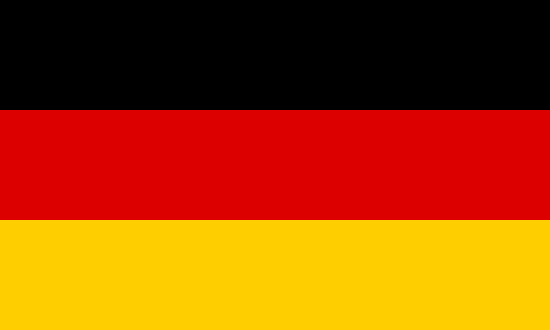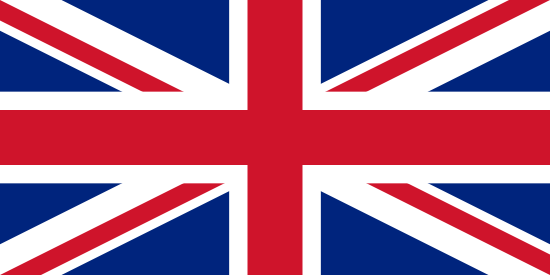Feed sector - Logistics and trade
If you want to participate in the QS as a trader or as a service provider in the area of transport, storage and transshipment, register online in the QS database.There, also select the certification body that you have commissioned to perform the audit. After contractual integration via the certification body and passing the audit, you will get the QS approval.
Companies or a group of companies with several trading locations as well as storage and/or transport facilities can be audited via a multi-site certification. Several locations are certified at the same time without having to visit each location. In order to make the multi-site certification possible for a group of companies, the main location must inform the QS office which companies with which locations belong to the group and submit the appropriate agreements for multi-site certification.
You can see which certification bodies are allowed in the QS scheme from this list.
All information that are relevant for the system participation can be found here.
Recognized standards
If you are already certified according to another feed standard than QS, there may be the possibility to participate in the QS scheme via a recognition. Which standards are recognized by QS and how the delivery into the QS scheme is made possible can be found in Annex 9.1 of the Guideline Feed Sector.
Relevant documents
FAQs
In principle, each feed supplier must have the eligibility of delivery into the QS scheme. However, it may be necessary, particularly when entering new markets, to purchase goods from non-certified producers or traders for a defined period. If you want to purchase feed for feed production from a non-certified supplier, you must act as a gate keeper for the supplier and thus take over the quality assurance for that feed.
Detailed information on the gate-keeper regulation can be found in Annex 9.2 to Guideline Feed Sector.
Producers of fatty acids from chemical refining, fatty acid distillates from physical refining, monoesters of propylene glycol and fatty acid, blended fats and oils, which contain fatty acids and blended fatty acids, crude fish oil and crude coconut oil as well as producers of blended fats and oils which contain fatty acids and blended fatty acids must carry out a positive release sampling before marketing their end products.
In addition, positive release sampling must be carried out for crude fatty acids from splitting and pure distilled fatty acids from splitting if a raw material other than vegetable oil (QS number 02.20.01) was used for the production. Also, for fatty acids, esterified with glycerol, salts from fatty acids, mono-, di- and triglycerides of fatty acids and mono- and diglycerides of fatty acids esterified with organic acids positive release sampling must be carried out if they are not produced with or from fatty acids from the splitting of vegetable oil (QS number 02.20.01).
These products can only be placed on the market if uncritical analysis results on certain parameters, e.g. dioxins, are already on available and handled to the customers.
For more information on the positive release sampling in QS feed monitoring, see the 18426.
If you want to participate in the QS scheme as a feed company owner, register in the QS database. There you also choose a certification body that will perform the audit at your company. After successful auditing, feed producers and traders sign a scheme agreement with QS. Service providers like warehouse keepers and transport companies are contractually integrated into the QS scheme via the certification body.
You can find out which certification bodies are approved in the QS scheme from this list.
First, the company must at least once a year create a site-specific control plan based on the requirements of the Guideline Feed Monitoring, which must at least be met. This control plan considers the expected annual tonnage for each product group (sector-specific) that will be sold as QS goods. The planned analyses must be allocated reasonable over the year to the QS feed and the given parameters.
The samples must be taken by a qualified person who is trained and experienced in the sampling of feed. Then the sample related data must be entered into the QS database. Afterwards, the sample should be sent within 10 days, together with the printed sample report, to the QS-approved laboratory commissioned in the QS database. As soon as the sample related data in the database is in the state Laboratory Commissioned
, the laboratory gets access to the data and can enter the analysis results in the QS database. The laboratory must enter the results of the analysis in the QS database at the latest 30 days after the sample has been received or 10 days after the end of the analysis. Once the laboratory has entered the analysis result and completed the sample related data, you can see the analysis results in the QS database under Feed Monitoring
and Analysis Results
. Here you can also compile the analyses for an evaluation by means of various filtering options or via a download function.
Instructions for using the QS database and entering the sample related data can be found in the support area of the QS database.
The risk-oriented additional control plan Aflatoxin B1 in maize
responds to the persistent contamination of aflatoxin in maize (products). It is adapted to the current harvest as well as monthly during the rest of the year and adjusted if necessary. The basis for the assessment of the risk classification are current analysis results, which are collected by QS and other international standard owners, notifications in the EU rapid alert system as well as risks due to weather conditions in the respective country.
Any QS certified feed company that purchases maize and maize processing products (feed material) must comply with the aflatoxin B1 additional control plan in addition to the annual analyses carried out in accordance with the Guideline Feed Monitoring (including pure delivery traders). If your supplier is certified by QS or a QS recognized standard, you do not need to apply the additional control plan because it is already met.
For more information on the additional control plan aflatoxin B1, see Annex 8.5 Additional control plans to the Guideline Feed Monitoring.
The IDTF (International Database Transport for Feed) is a database of the ICRT (International Committee Road Transport). The database shows how to clean the load compartments before they can be loaded with bulk feed. The cleaning requirements are internationally harmonized and thus also facilitate cross-standard
transport.
The database is regularly updated by the ICRT. All products that are not classified in the IDTF are not approved as a load for means of transport that also transport feed.
When do I have to be certificated as a feed company?
If you want to deliver feed to a QS certified customer, you must be eligible to deliver the correspondent products into the QS scheme. This is possible either via a QS certification or via a certification according to a standard recognized by QS. Excluded from the certification obligation are only pure trade, storage, transhipment, and transport of packaged goods as well as pure agent activities.
Further information on the certification obligation in the QS scheme can be found in the Annex 9.3 to the Guideline Feed Sector.
The analysis in QS feed monitoring can only be carried out by QS-approved laboratories. The recognition of laboratories by QS is necessary to ensure compliance with the QS requirements and thus to ensure the comparability of analytical results between laboratories at a uniformly high level.
The approved laboratories are published here and can be selected in the sample related data in the QS database.
Feed monitoring monitors compliance with maximum levels, action thresholds and guidance values for mycotoxins, environmental toxins, plant protection products, salmonella, heavy metals, animal components and polycyclic hydrocarbons (PAHs). The control plans list the minimum parameters on which the feedstuffs must be examined at least per year, in terms of industry or animal species. The frequency of analysis depends on the annual quantity (tonnage) for QS feed per location.
You can find out which control plans apply to you in the 18426.
The laboratories carrying out analysis in QS feed monitoring must be accredited in accordance with DIN EN ISO/IEC 17025. There are also minimum requirements for the range of analysis and the laboratories must participate in ring tests and laboratory competence tests in the feed sector.
For more information on the requirements for laboratories in QS feed monitoring, see the 18426.
A multi-site certification is possible for companies with a main location and several storage, transport or trading locations that belong to the same company. In addition, it is possible to integrate a group of companies that work together in a quality alliance and form a network of affiliated companies into the QS scheme as part of a multi-site certification. The network of affiliated companies does not have to be a legal entity. To enable multi-site certification for a network of affiliated companies, the main location must inform the QS office which companies and which locations belong to the bundle and submit the appropriate agreements for multi-site certification.
You can find out which further requirements for a multi-site certification need to be met in the 18392 and the 18387.


